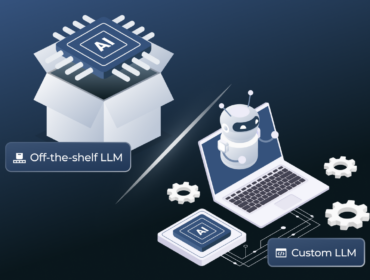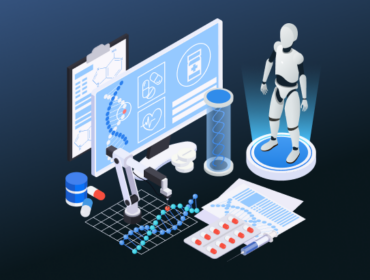The article is written based on Unicsoft’s extensive experience of implementing machine learning in insurance companies.
Companies that began developing projects using ML technologies would go on to change the market and the rules of the game in their industry. Amazon introduced a recommendation system for purchases on its website that contributed to the current format of online shopping. Google developed a targeted advertising system that offers the user individually selected products based on information known about them, with the help of ML. Netflix, Pandora (internet radio), and Uber also became key figures in their markets by taking this development vector to new heights with machine learning at the heart of their solutions.
Research conducted by Accenture Technology Vision revealed that more than 90 percent of insurers are using, planning to use, or considering using machine learning or AI in the claims and underwriting processes. McKinsey predicts that by 2030, AI and machine algorithms will change every aspect of the insurance industry, from promotion and underwriting to pricing and payouts. Today, technologies make it possible to predict the price of a policy practically in real time. Let’s discover how the insurance industry can benefit from machine learning technology.
Why does an Insurance Company Need Machine Learning?
An important financial indicator for an insurance company is the difference between the cost of insurance sold and the cost of reimbursement for insured events.
Because cost reduction is critical to this industry, companies use a wide variety of proven methods but are always on the lookout for new opportunities.
For a health insurance company, predicting the cost of treating insured persons is an effective way to reduce costs. If it is known that an expensive operation will be required for the treatment of a client in the next month or two, you need to take a closer look at what is required in the leadup. For example, transfer preparation to more qualified curators, offer to undergo diagnostic examinations in advance, monitor the implementation of doctors’ recommendations, and so on, in order to effectively reduce the cost of future treatment (in some cases).
But how to predict the cost of treating each client when there are more than a million of them?
One of the options may be an individual analysis of the information known about the patient. So you can predict, for example, a sharp increase (if we consider relative values) or just a peak (absolute values) in the costs. The data in this problem contains a lot of noise, so you cannot expect a 100% accurate result here. However, since we are talking about class-unbalanced statistics, even 50% of predicted peaks with 80-90% of predicted no-cost increases can provide important insights for a company. Problems of this nature are only effectively solved by implementing machine learning in insurance companies. Of course, it is possible to manually select a set of rules from existing data. However, in the long run, this would be very crude and inefficient for insurance companies compared to machine learning algorithms. This is because it is almost impossible to manually select the optimal boundary values and coefficients.
Machine Learning for Insurance Companies: Main Points
- Insurance personalization. AI and ML are able to analyze a high volume of information about each customer in the insurance field. For example, if a client was interested in recreation, air travel, or new countries, it is important for the technology to be able to offer relevant travel insurance. If the client was interested in a mortgage or real estate purchase, it is important for them to receive relevant property insurance offers.
- Estimation of insurance risks. The assessment of insurance risks for each client is carried out using a variety of individual and general variables, for example: information about the client, information about the object to be insured, statistical data on insured events with the same indicators, and so on. In this type of situation, it is difficult for a person to assess the risk, and ML does so accurately.
- Warning of insurance risks. To minimize risks, machine learning is in close contact with the Internet of things. When calculating insurance risks and preventing insured events, information obtained from the insured objects of the client are taken into consideration. For example, if a car is insured, then information is obtained from its sensors. The same is true for insured houses. A number of European insurance companies have gone even further. For example, they are connected to the “smart home” system of the insured house, and all indicators from the sensors are sent to the servers of insurance companies. If they calculate a high probability of an insured event occurring, they inform the “smart home” owner about this even earlier than the “smart home” itself. The prevention of such insured events is beneficial to both parties: the insurer and the owner of the house.
- Process automation. Machine learning in the insurance industry serves general purposes rather than specialized ones. For example, automatic recognition of uploaded documents is implemented, which reduces the cost of this process. Automatic recognition of damaged machines is also implemented to determine the cost of potential repairs.
Four Machine Learning Trends Shaping the Insurance Industry
Experts believe that four core Machine Learning and Artificial Intelligence technology trends will reshape the insurance industry over the next decade.
- Data from connected devices.
Equipment with sensors is not something new. However, experts expect that we will see a huge increase in the number of connected consumer devices in the coming years. The market penetration of existing devices (these include cars, fitness trackers, home assistants, smartwatches, etc) will increase rapidly. New categories will include clothing, eyewear, home appliances, medical devices, and shoes. Experts estimate there will be up to one trillion connected devices by 2025.
- Increase in physical robotics.
The field of robotics will continue to change how humans interact with the world. 3-D printing will continue to reshape manufacturing and the commercial insurance products of the future. Experts believe that by 2025, 3-D-printed buildings will be common. That’s why carriers will have to assess how this development changes risk assessments. Programmable, autonomous drones, farming equipment, and enhanced surgical robots will all be hot trends that become more viable in the next decade. Carriers will need to understand how the presence of robotics in everyday life will shift risk pools and change customer expectations.
- Open-source and data ecosystems.
Data has become ubiquitous, leading to open-source protocols that emerge to ensure that data can be shared and used across various industries. Different public and private entities will come together to create ecosystems in order to share data for multiple use cases under a common regulatory and cybersecurity framework. Wearable data could be ported directly to insurance carriers, while connected-home and auto data could be made available through Amazon, Apple, Google, and other consumer device manufacturers.
- Advances in cognitive technologies.
Neural networks and deep learning technologies will evolve to be applicable in a wide variety of apps. These technologies will become the go-to tools for processing large data streams, which will be generated by active insurance products related to a person’s behavior and activities. The increased commercialization of these types of technologies will lead to carriers having access to models that are constantly learning and adapting to the world around them. This will lead to the pioneering of new product categories and engagement techniques.
The Future of Machine Learning in the Insurance Industry
The digital transformation of the industry has just begun. Mckinsey experts are now painting an absolutely fantastic picture of digital insurance in 2030: a personal insurance agent in a smartphone will guide the client to the safest car routes and calculate the amount of an insurance premium depending on the user’s decisions.
The booming Internet of Things will provide machine algorithms with even more data about users. Big data and predictive analytics will make it possible to accurately predict accidents and save lives.
Today, most traditional insurance companies will face a more modest challenge: to give their customers convenient digital tools to manage policies, services, and expenses.
Final Words about ML in Insurance
If you are looking for opportunities to strengthen your insurance business with the help of digital technologies, we recommend contacting our experts. Call, write, leave a request in the form on our site, and our experts will help you benefit from using ML technologies in your insurance business by creating a road map for developing and implementing ML solutions.
FAQ
- Benefits of using machine learning in insurance?
- How can Unicsoft help implement machine learning?
- Popular Machine Learning Trends in Insurance





![How Machine Learning Transforms The Insurance Industry? What’s the EU Artificial Intelligence Act and How to Comply? [Webinar]](https://unicsoft.com/wp-content/uploads/2024/03/Cover_1140_v1.1-370x280.png)

